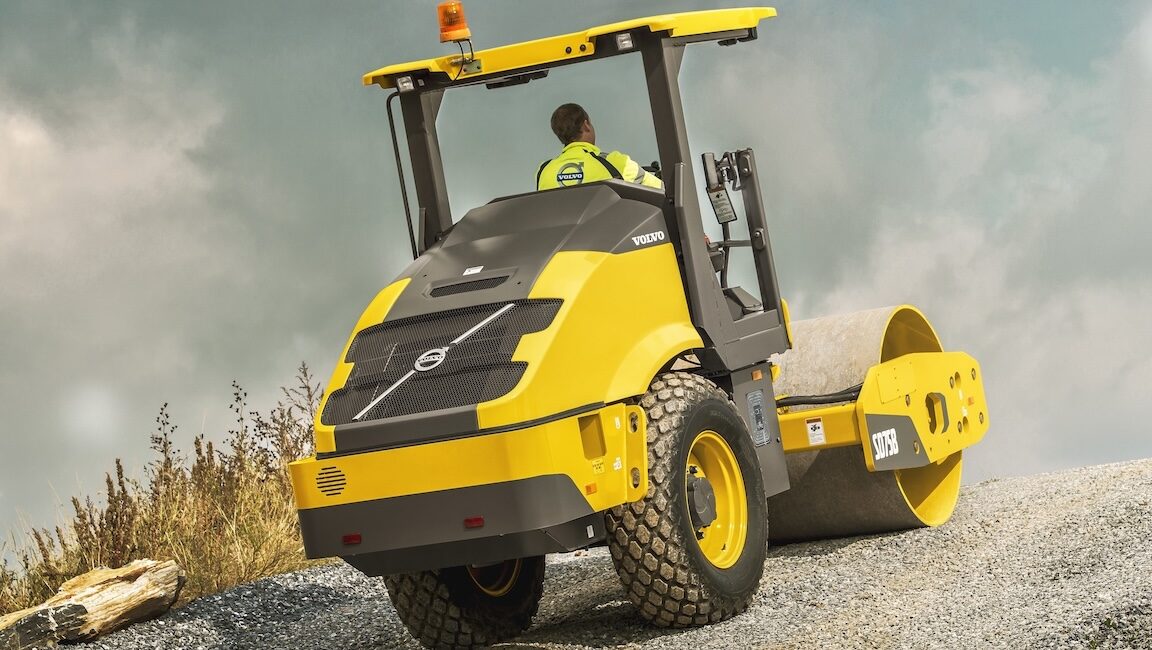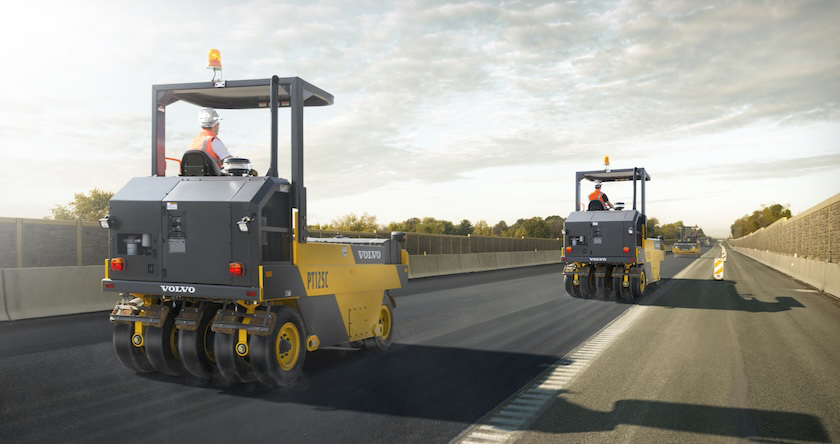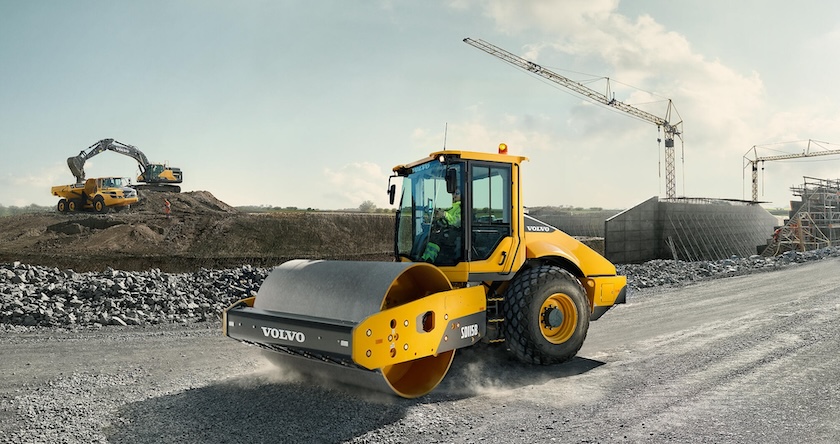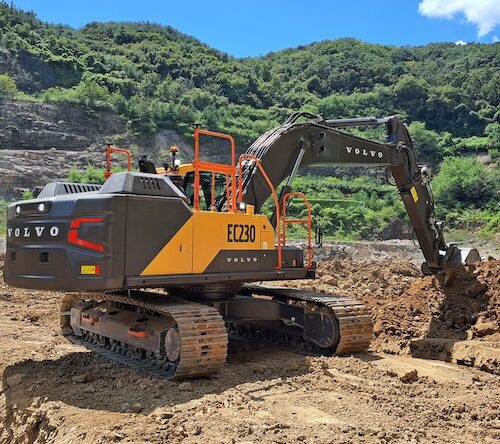Tips For Storing Compactors During Cold Winters
In regions where heavy construction equipment is stored for extended periods during cold weather, a proper winterization process is essential. For those of you who work in cold climate regions […]


In regions where heavy construction equipment is stored for extended periods during cold weather, a proper winterization process is essential. For those of you who work in cold climate regions like this, these tips can help ensure your asphalt and/or soil compactors are winterized and stored properly so they’re ready to go when the spring thaw arrives.
TIPS FOR WINTERIZING AND STORING ASPHALT COMPACTORS
First, if you anticipate needing to start your compactor in very cold temperatures, consider adding anti-gel to the fuel. If it gets really cold out, diesel can thicken or solidify into a gel-like substance, making it difficult or impossible for your engine to start.
For machines in storage, you’ll also want to start the engine once a month and run it until the engine comes to operating temperature. This precaution will ensure a long seal life and protect the operating systems. Be sure to wait until the exhaust outlet is cool and then cover the engine air intake and exhaust outlet securely to keep out dirt and water.
The batteries are also a concern with sub-freezing temperatures. The colder weather slows down the electron movement, and in turn, capacity and cranking amps are diminished. A battery that’s not at peak performance or charge can be susceptible to issues in freezing temperatures. For best practice, batteries should be removed from the machine or kept on a tender.

When it’s time to store your asphalt compactor for an extended period of time in a cold climate, be sure to follow machine preparations like these:
- Clean the machine thoroughly.
- Select a storage site that’s not subject to flooding or other natural hazards. It’s recommended that your machine be stored in a building or under a tarp, if possible. Position your compactor on level ground and apply the parking brake.
- Follow the procedures for the daily and 50-hour service. Ensure your machine is greased and all lubricants are to spec (refer to your machine’s user manual).
- Fill the fuel tank to the maximum level to minimize any condensation.
- Change the engine oil and engine oil filter.
- Drain the fuel/water separator.
- Check the coolant mixture and adjust as needed.
- Protect all exposed cylinder chrome rods with protective grease to prevent corrosion.
- Drain the front and rear water tanks by running the water pumps to purge all remaining water from the system. After draining the system, we recommend running non-toxic antifreeze through it because the hose routings can have low points which may contain water, plus the spray nozzles could contain some residual water and crack if they freeze.
- Shut down your machine and ensure the battery disconnect switch is in the off position. It’s also a good idea to cover the instrument panel with plastic and secure it. It’s not recommended to use clear plastic because it may allow UV rays to pass through which could fade components or potentially contribute to degradation of certain types of plastic components.
- Remove all water filter canisters (there are four on Volvo machines) and store them in a dry location.
- Under the water tank, open the water valves and water pump drain valves, then remove the drain caps from the ends of each spray bar.
- If applicable, drain the AdBlue®/DEF tank. Remember, DEF can be stored assuming that some basic precautions are taken when storing it — no contamination, don’t allow it to freeze, keep it out of direct sunlight and so on.

If your compactor has a winterization kit, drain the water system completely, install the water filter canisters, then close the water valves next to the canisters.
If your water pumps have a winterization option, open the winterization valve and place the open end of the hose in a container of non-toxic, winterizing antifreeze. Avoid using engine antifreeze, as it often contains toxic substances like ethylene glycol which aren’t safe for water systems, especially those in contact with drinking water like in RVs or boats. Engine antifreeze is also typically non-biodegradable, meaning that if it’s pulled through a spray system and expelled, it could be harmful to the environment. Always use an antifreeze that’s safe for water systems and be sure to operate the water system long enough to draw the antifreeze into the hoses and spray bars to prevent freezing.
TIPS FOR WINTERIZING ELECTRIC ASPHALT COMPACTORS
If you own an electric asphalt compactor like our DD25 Electric, the process for winterizing the water systems remains the same. Maintaining the 12V service battery is also similar, but it’s more crucial due to the typically smaller size of the battery (more comparable to those found in motorcycles or lawn/garden equipment than in cars).
It’s important to keep the traction batteries fully charged; however, avoid charging them when temperatures are below freezing. The specific battery chemistry in your machine may have unique requirements, or it may be equipped with a heating system. In general, when charging in cold temperatures, the electrons slow down, making it harder to push the charge into the battery, much like trying to force an object through a narrowing opening.
TIPS FOR WINTERIZING AND STORING SOIL COMPACTORS
With the exception of the water systems, many of the winterizing tips for asphalt compactors apply to soil compactors as well. And if you’re only planning to store your soil compactor for a short time (two weeks or less), these are the maintenance steps you’ll want to take:
- Lower all components positioned by hydraulic cylinders (e.g. the front blade).
- Place all switches and controls in the off position.
- Place your compactor in the Service position.
- Close and lock all doors and accessible areas.

If you’re planning to store your soil compactor long term (more than two weeks), be sure to perform these maintenance steps:
- Perform all of the short-term storage steps above.
- Lubricate the machine.
- Fill the fuel tank to the maximum level to prevent condensation inside the tank.
- Fill the hydraulic tank to the maximum level.
- Have a qualified service technician check the engine coolant concentration to prepare the engine cooling system for freezing temperatures.
- Wash the machine and allow it to dry to help prevent any unnecessary corrosion or wear and tear come spring. Touching up the paint finish can also help avoid corrosion.
- Treat exposed parts with an anti-corrosion agent which can be easily removed at a later date. Be sure to follow all agent manufacturer safety instructions when applying and removing an anti-corrosion agent.
- Protect the tires and all exposed rubber components against direct sunlight.
Winter can sneak up in a hurry — having a maintenance plan to prep and store your compactors before the extreme cold hits can help ensure your machines aren’t unnecessarily damaged during a cold winter.
If you’re looking for additional tips like these, here are some excavator winterizing tips to keep your excavators in good shape throughout the cold months.
Categories: Construction Equipment, Insights


